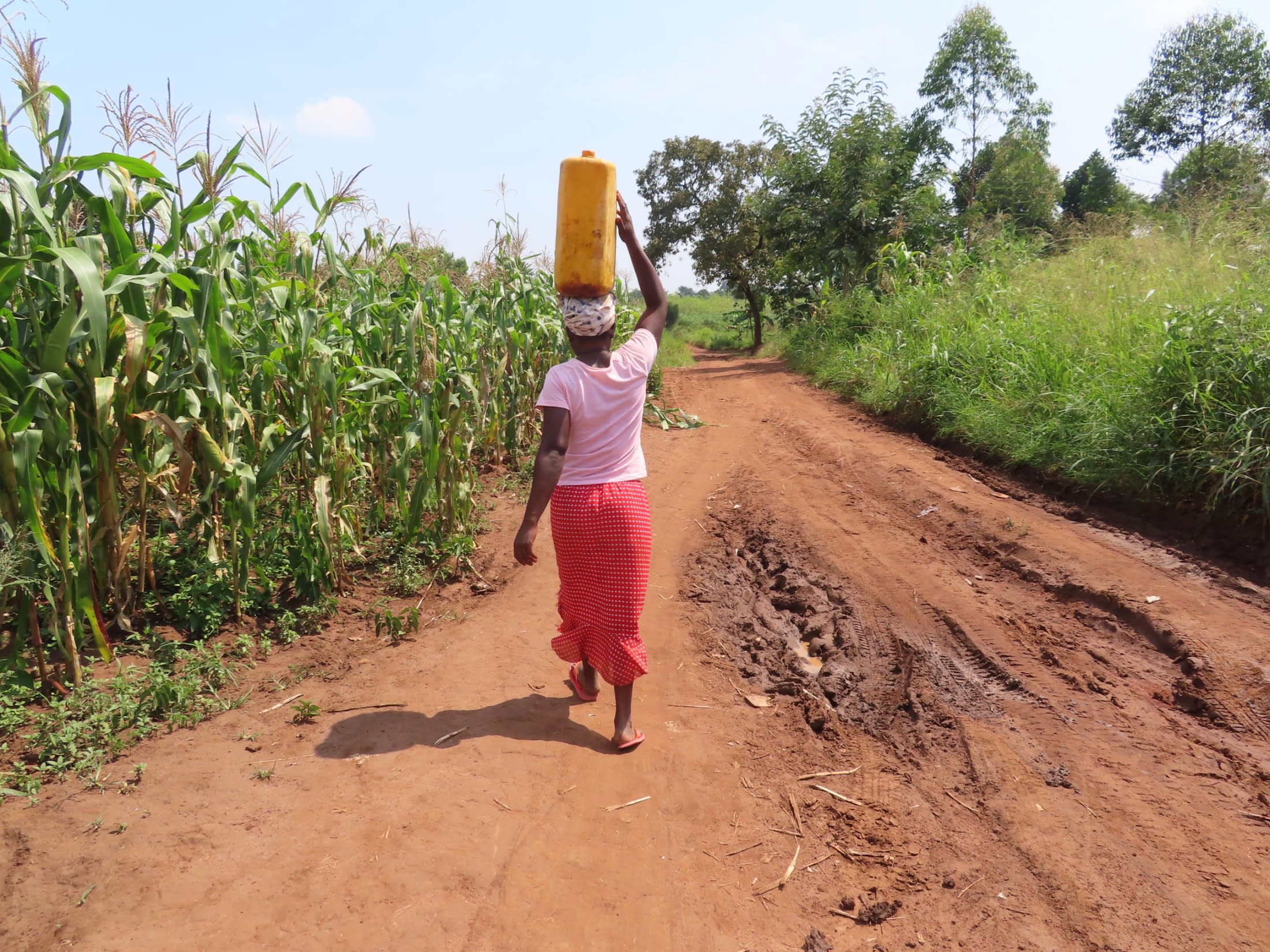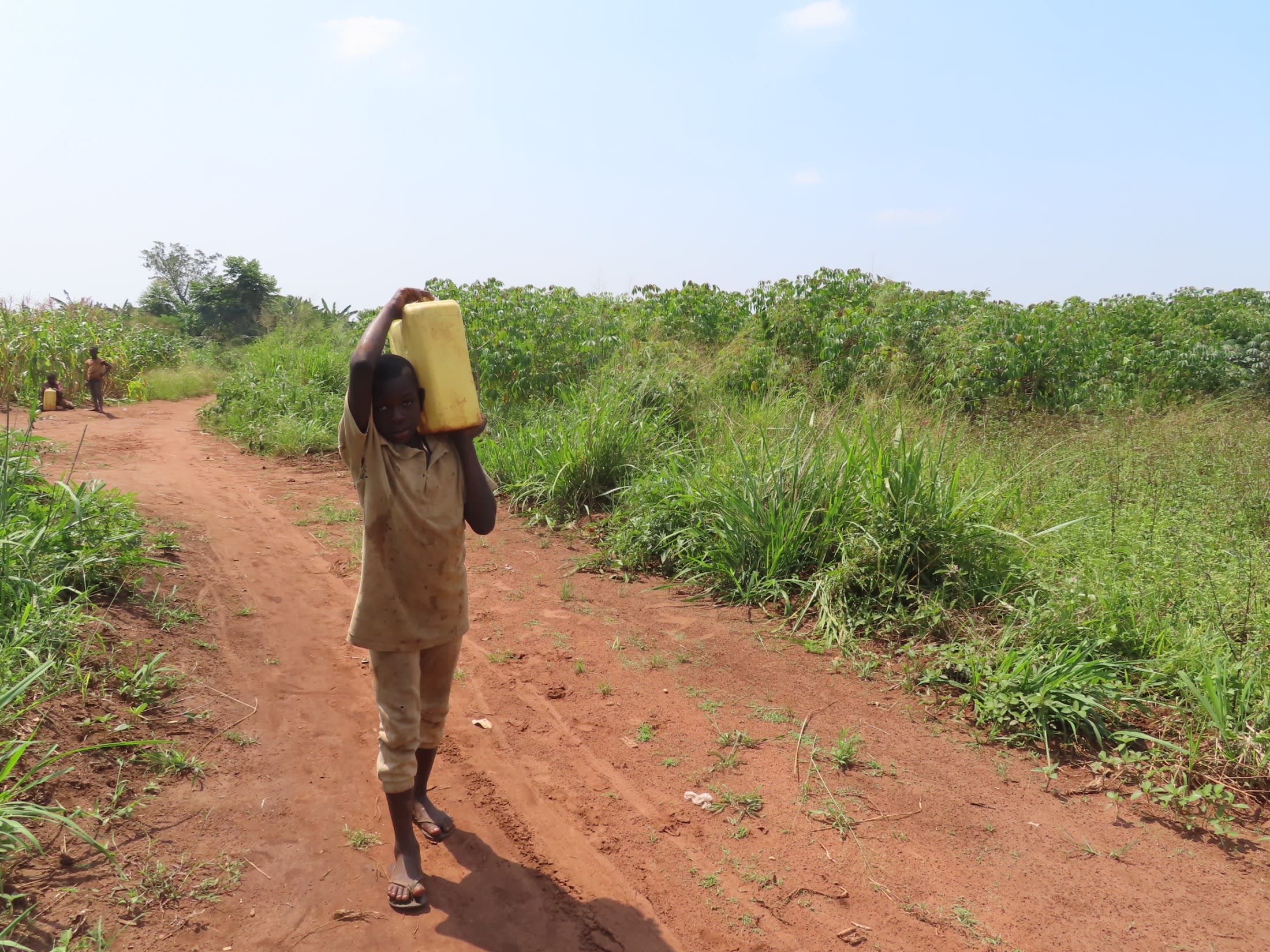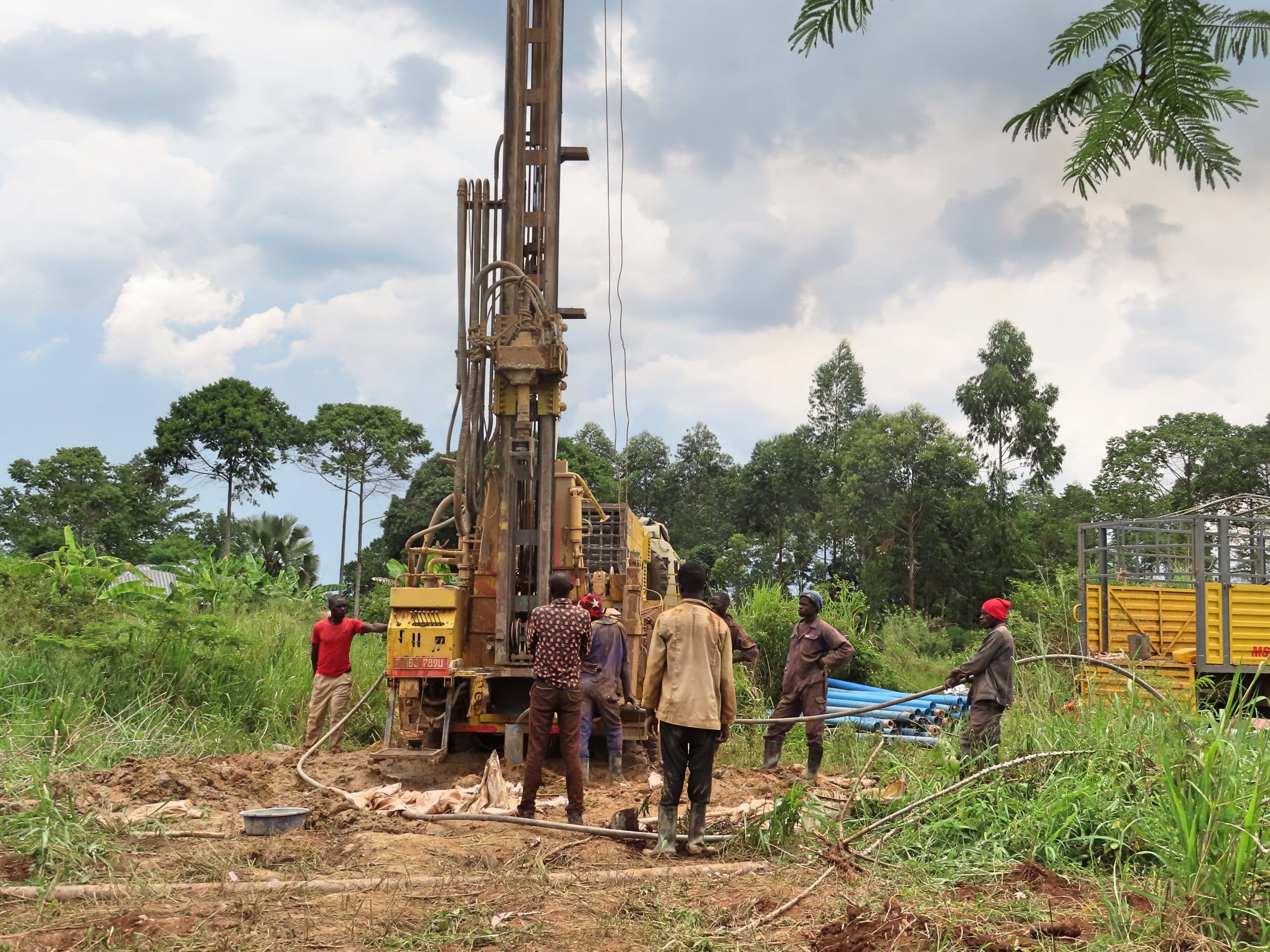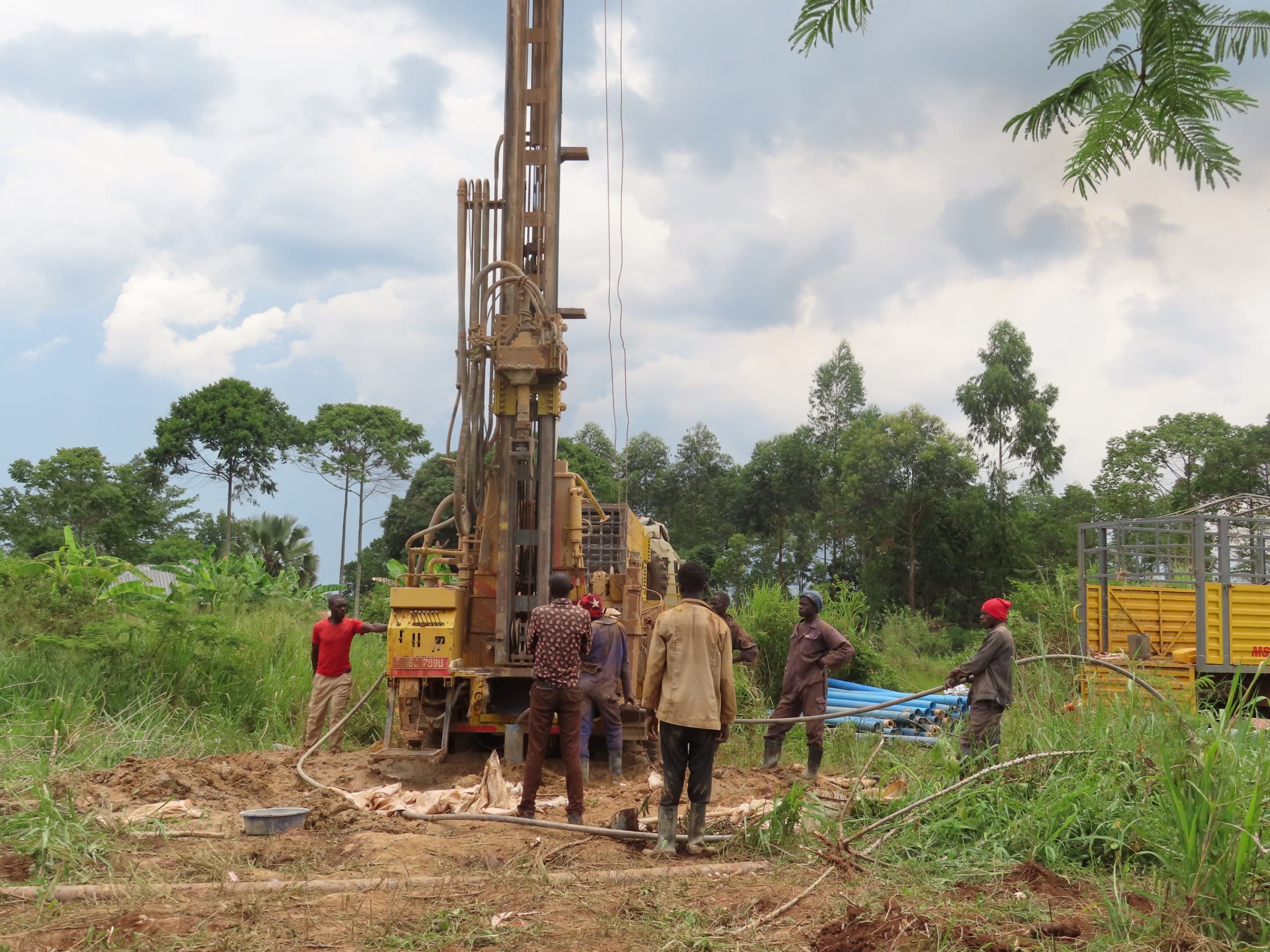The current two water points in Kyakaki cannot keep up with its large population of well over 1000 people. They are overcrowded, constantly breaking down, and maintenance expenses have risen because of the increased pressure on the water points.
The 400 people that live near the Kyakaki Trading Centre are exhausted from walking long distances and tired of wasting valuable time and energy that they could use on other productive tasks. They need a well near them to increase their livelihoods and give attention to other essential things.

Rosemary Aganyira ( carrying water in the photo above), 32, explains, "The village has two functional water points, and they are very far. There is a lot of suffering as far as access to clean and safe drinking water is concerned. A lot of productive time is wasted in collecting water. I walk a distance of about 2Kms (1.25 miles), spending two to three hours to get water home. This makes me sometimes use the available water sparingly. We urgently need more water points in this village."
Kingston A., 11, carrying water in the photo below, collects water for his family. He said, "There is always a very long line at the water point due to many people since most people in the village converge here to get drinking water. It is also very far away and [I] move a distance of 1.5kms (nearly a mile). I spend a lot of time on the way and even at the water point waiting for the long queues which makes me [to] delay at the water point."

This proposed solution will help relieve the community from walking long distances, overcrowded water points, and wasting time. And community members like Rosemary and Kingston can be relieved of the physical burden of carrying water long distances.
Here's what we're going to do about it:
New Borehole
This new borehole is an exciting opportunity for this community! We work with the community to determine the best possible sites for this well.
We conducted a hydrogeological survey and the results indicated the water table is an ideal candidate for a borehole well. Due to a borehole well's unique ability to tap into a safe, year-round water column, it will be poised to serve all of the water needs for this community, even through the dry months.
Community members will help collect the needed construction materials such as sand, rocks, and water for mixing cement. They will also provide housing and meals for the work team, in addition to providing local laborers. We will complement their materials by providing an expert team of artisans and drilling professionals, tools, hardware, and the hand-pump. Once finished, water from the well will then be used by community members for drinking, handwashing, cooking, cleaning, and much more.
Training
Training's main objectives are the use of latrines and observing proper hygiene practices since these goals are inherently connected to the provision of clean water. Open defecation, water storage in unclean containers and the absence of hand-washing are all possible contaminants of a household water supply. Each participating village must achieve Open Defecation Free status (defined by one latrine per household) prior to the pump installation for this borehole well.
This social program includes the assignment of one Community Development Officer (CDO) to each village. The CDO encourages each household to build an ideal homestead that includes: a latrine, a handwashing facility, a separate structure for animals, a rubbish pit and a drying rack for dishes.
We also implement the Community-Led Total Sanitation (CLTS) approach with each of our village partners. This aims to improve the sanitation and hygiene practices and behaviors of a village. During these sessions, village leaders naturally emerge and push the community to realize that the current practices of individual households – particularly the practice of open defecation – are not only unhealthy, but affect the entire village. CLTS facilitates a process in which community members realize the negative consequences of their current water, sanitation and hygiene behaviors and are inspired to take action. Group interactions are frequent motivators for individual households to build latrines, use them, and demand that other households do the same.
Improved Sanitation
The aim is that all households own an improved latrine. Many households do not use a latrine but use the bush. Due to open defecation, feces are spread all over the village. This leads to waterborne diseases and contamination of groundwater and surface water. Our aim is that the community is able to live a healthy life free of preventable diseases. We endeavor that at the end of our presence in the community, people will have both access to sustainable, clean water and access to sanitation. We have now organized families to form digging groups for latrine construction, and empowered them with tools to use.

 Borehole Well and Hand Pump
Borehole Well and Hand Pump


























